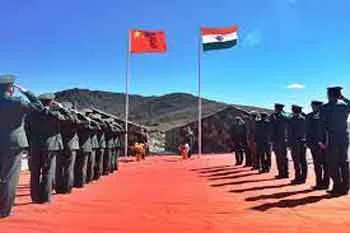India and China have resumed “active communication” over border control along the Line of Actual Control (LAC). The renewed dialogue, confirmed by both sides on Wednesday, marks the latest attempt to ease tensions that have simmered since the deadly 2020 Galwan Valley clash.
Officials described the talks as “constructive but cautious”, indicating that while no major breakthrough was reached, both nations agreed to sustain the momentum of dialogue.
What’s Happening on the Ground
According to a statement released by China’s foreign ministry, “both sides maintained active communication over border control and stability.”
India’s Ministry of External Affairs (MEA) echoed a similar sentiment, emphasizing that the discussions focused on “restoring peace and tranquility” along friction points in eastern Ladakh.
Defence analysts say that troop disengagement in certain sectors has been progressing, but key flashpoints like Depsang Plains and Demchok remain unresolved.
“These talks are less about quick results and more about preventing accidents or miscalculations,” said Lt Gen (Retd) D.S. Hooda, former Northern Army Commander.
Why It Matters
The LAC — a 3,488-km de facto border separating India and China — remains one of the world’s most heavily militarized zones.
Since 2020, both countries have held over 20 rounds of military and diplomatic negotiations, yet the border situation remains sensitive.
For India, stability in Ladakh is essential not just for regional peace, but also for ensuring that economic and infrastructure projects — such as border roads and tunnels — continue without disruption.
Meanwhile, China faces growing international scrutiny and may seek to project diplomatic moderation amid its own economic slowdown.
Global & Strategic Context
Experts view the current dialogue as part of Beijing’s broader effort to improve relations with its Asian neighbors.
However, India remains cautious, balancing its diplomatic engagement with a firm military presence along the frontier.
“Dialogue is good, but ground reality hasn’t changed much. Both sides are reinforcing their infrastructure,” noted geopolitical analyst Brahma Chellaney.
The timing of these talks also coincides with New Delhi’s upcoming winter deployment cycle, when extreme weather makes logistics and troop rotation critical.
Reactions from Policy Circles
Indian security experts largely welcomed the talks, calling them a “necessary step” though warning against complacency.
Opposition leaders in Parliament have demanded greater transparency on the outcomes of each round of dialogue.
“The government must ensure that sovereignty is not compromised in any backchannel deal,” said a senior Congress spokesperson.
Social media users too voiced cautious optimism — with hashtags like #IndiaChinaTalks and #LACDialogue trending on X (formerly Twitter) Thursday morning.
Highlights
India and China held renewed discussions on border control along the LAC.
Talks described as “active and constructive” but no major breakthrough yet.
Key friction areas like Depsang and Demchok remain unresolved.
Experts urge continued vigilance as winter deployments begin.
Global observers see dialogue as a sign of cautious thaw in ties.
Conclusion
While the India–China border dialogue offers a glimmer of diplomatic progress, experts agree that the road to lasting peace remains long.
Both nations appear committed to avoiding escalation — a sign that stability, not confrontation, is the current goal.
For now, the world will watch whether these “active communications” lead to real disengagement or remain diplomatic signaling.
















